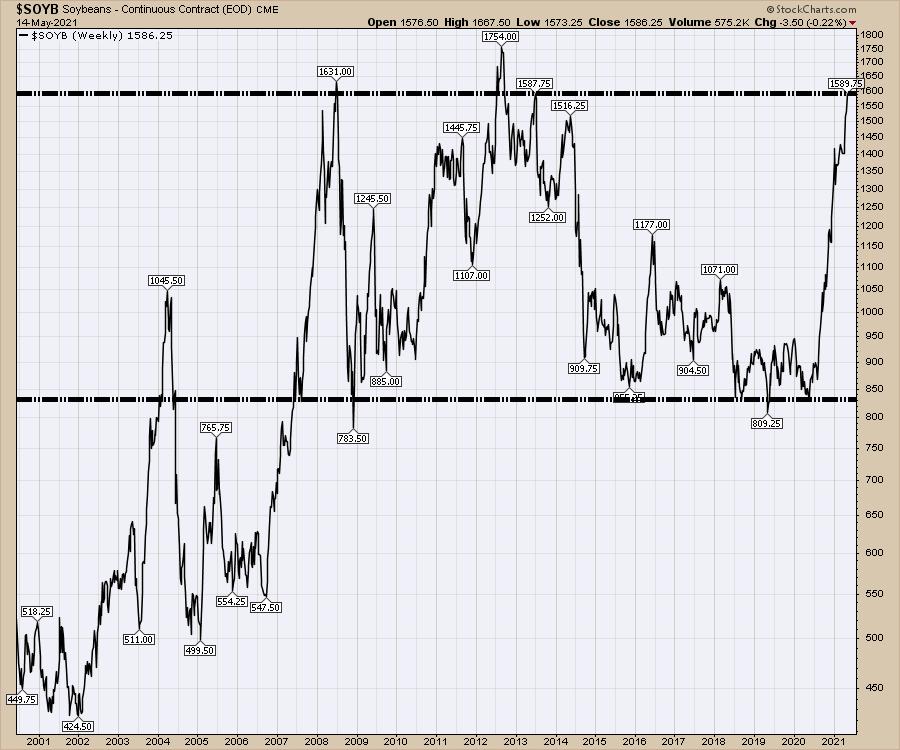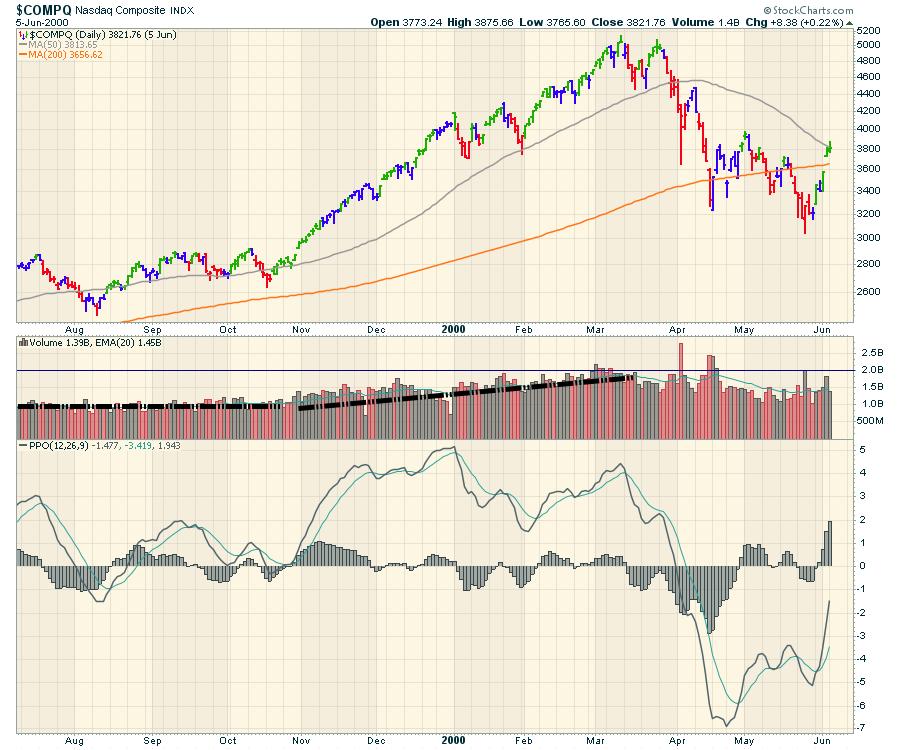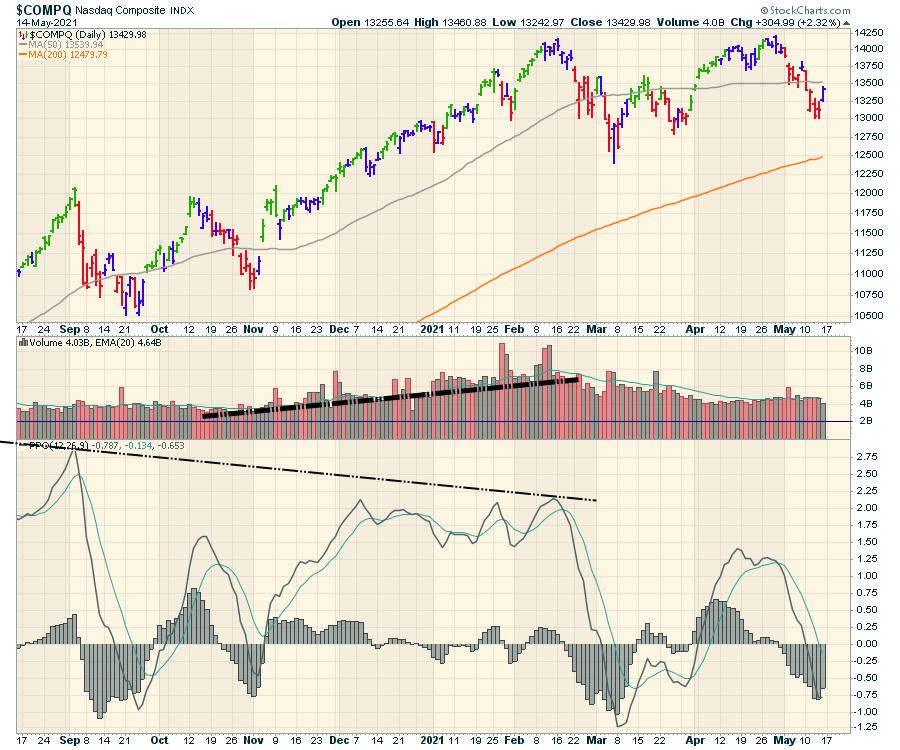While I was driving around picking up a curbside order at Canadian Tire Thursday, I was listening to Fast Money. Kevin O'Leary (one of the Fast Money guys) suggests there is no way the stock market stops here. We have so much growth in front of us. "What a blind statement," said by everyone at a market top. However, let's walk down this rabbit hole today.
I wholeheartedly agree with the premise, and it is undoubtedly what we all said all the way up and over the 2000 top, the 2007 top, and many tops before that. In 2000, we were past Y2K, the internet was coming on full steam, and we were going to electric, hydrogen, solar, wind etc. Software was it. Amazon was gonna be great ($300 to $6). Apple and Microsoft topped out for years.
If the governments worldwide can do this drunken fire hose of money aimed at the economy endlessly, why stop? Is there something or someone doing what some of us would perceive to be a logical approach in government spending worldwide if you fear debt? The rampant spending appears to be a country-by-country global strategy in the YOLO world. YOLO stands for You Only Live Once.
We seem to be worried about carbon wiping out the world years earlier than it would otherwise be wiped out, but not about debt doing the same. Interestingly, all the pessimists will tell you it is the devaluing of the currency and the debt that kills you. Not this time, if you listen the the central bank spin doctors.
The Canadian debt strategy is strides ahead of throwing money out, akin to the USA platform of $1.9 trillion for this, and $2T for that.. But these two spending soldiers don't look much different than any other G20 country, so it exists wherever a government resides. Europe, Canada, Japan, America, see - think big, borrow faster - and for sure bigger than the previous dude/dudette. Hit the easy button and go. It also seems more platform-agnostic - Republican/Democrat/Conservative/Labour/Liberal - whatever the title. Every party keeps sending financial gifts without a payment strategy other than virtue signal to tax a few people that have the accountants to get around every one of these virtue signalling public tax strategies. This chart is obviously set to explode higher when we get the COVID data in there.
USA spending:

Spending was climbing in relation to GDP in the late 1990s and 2000s as Bill Clinton/George Bush rode the wave of increasing GDP.
The "extreme" debt vault was originally opened by Paulson/Bernanke/Bush to deal with the GFC. Obama had some excuse coming out of the GFC, but he kept the vault open for corporations in a big way. To give some credit, the graph improved from high levels off the back of the GFC. Obama's monthly deficit levels were improving for 6 of the 7 years following. Republicans proved no better in the restrained spending. President Trump built up more spending every month, and the amount of deficit per month was accelerating, getting farther away from balance. It was over $100 billion per month in January 2020 and it was around $50B/month when he started. That was within 4 years visible on the chart. A doubling deficit to a $1.2 Trillion annual run rate while a bull market raged on.
I am not a US voter, so don't shoot the messenger. The facts/results don't support Kudlow/Trump spin that lower taxes would pay the money back. History lets us see that. Biden is going to blow his budgets out early in his tenure like Canada's Trudeau did in 2015, and probably never get on plan to pay it back. It's very clear Canada won't, but Biden will have to prove it out if he actually does care about it. Nobody seems to care if they do. Obviously, this chart will spike lower.
USA Deficits as a % of GDP.

Tax breaks, suggested as a solution, put America in a doubly (-2.4 to -4.6%) bigger debt to GDP (above chart) whilst a giant bull market raged, and according to the next chart, never sped up the economy (from the tradingeconomics.com site).
US GDP:

This very simple method of government/central bank firehose spending and liquidity is obvious fuel while a government is in office. And it's working... why stop? Keep the party rolling... Why would you stop if you know it is good times for now, and you'll never be the one to deal with it? We see that in cities and states with bizarre debts. Obama/Bernanke/Yellen's approach was expand the debt and it worked to keep the economy around 2%. Then it was Trump/Mnuchin/Yellen/Powell and it kept working to keep GDP around 2%. Now it's Biden/Yellen/Powell. Every problem... just think bigger and throw even more money at it. The St. Louis Fed President (Bullard) said (paraphrased) that the Fed failed in the past to increase inflation to their target rate and they are going to use forceful monetary policy measures to make sure they rekindle inflation this time.
But it is not limited to social debt. As an example, now all the major tech companies want the US government to fund building chip factories in America for them to profit with. They are already the largest, most profitable companies in the world, making money hand over fist. Apple's entire car development budget is just buried in the splashing around of cash flow. Tim Cook knows nothing about having to live within the boundaries of a cash-strapped Tesla lifestyle any more. So now the government should borrow even more to help the world's largest tech companies. Seriously?
If interest rates turn up like the central bankers all say they want, does it go like Soybeans? Soybeans were making near 10 year lows in March, 2020, which was so last year, as we are near new all time highs within 14 months. Here's a Soybean oil chart. Is that our problem model to get a spike like that?

Recently, someone told me this was nothing like 1999 because the big 7 all make huge profits now and they didn't then. Really? I agree there were wide swaths of the market that were similar to today's SPAC's and green energy companies. Why is this different than the growth potential of the late-1999 period? Apparently, one thing is the top 6 companies are making money big time now. But back then it was Intel, Cisco, Nortel, Microsoft and many more making real money. We did have profitable companies as leaders back then, so park that statement about no money making leadership outside in the trash.
As I mention in my newsletters roughly once a month, we are still tracking the Nasdaq Composite in 2000 with the Nasdaq Composite 2021. The size of the drop in percentage terms has been different, but the indicator patterns are eerily similar. The $SPX is more buoyant that it was in 2000, but the Nasdaq underperformance is still similar. The rally in April 2021 to test the February 2021 highs was obviously stronger than the 2000 environment, but the current social behavioural patterns of momentum shown by the PPO momentum waves and volume ramps are stunningly similar to 2000.
The old: That would be 2000. Like 21 years ago.

The new: Can that PPO since October look any more similar to the 2000? What about the volume? The volume doubling from the summer previous, etc. etc.

For now, the analogy holds, and at some time it will deviate. But having such a similar setup, and a similar indicator behavioural profile, should at least be cautionary.
Perhaps the obviousness of the Fed flood, the fiscal flood, and the government heartwarming kool-aid, where each G20 leader talks about the hardworking citizens in every speech, should all make us feel great. My motto is to ride the stock market uptrend while there is sunshine and avoid the downdrafts. Nobody, including the government or the Fed, told us to sell in February 2020.
That's what we try to do at GregSchnell.com. Who knew the drop in February 2020 would be 35%? I didn't, we didn't. We just know the market gets weak, and the market gets strong. February 2021 was a signal of weakness.
I like to invest with a strong backdrop. Thursday (May 13th, 2021) rally was a good start, not great. My strength indicators, which are designed to be early helping us avoid drops, saw this recent drop coming, whereas the advance/decline line data did not. The SSI indicators will also see the strength accumulating in the next rally when it does. Right now, it is time to get ready for the next rally.
The different euphoria signs have me getting more observant of oddities like O'Leary's call that it is always wonderful going forward. Or Steven Weiss... markets go up 90% of the time. Kool-aid, anyone? Greg's view - except for periods where they drop for 18 months. From simple Nasdaq underperformance, through to behavioural patterns suggesting something different, let's not take a new glass of kool-aid. Let the market keep proving it each week, because blind enthusiasm is rarely a winner's game. If you pulled your hair out last March and had sleepless nights, let's try to miss that next time.
An example for me of behaving like Kevin O'Leary is that I am still overtly bullish on oil, etc. I keep wanting to check my work, as the market party we are having seems set up for another round of federal financial cocaine-induced nirvana. Whenever I am very, very bullish, I can be blinded. So check and double-check the charts. I still have to be bullish on oil, but the XOP daily chart is starting to weaken. Keep reading the data and don't be stubborn is my preference.
Where does that leave us?
It seems so pessimistic/pesky to ask "the question." What question? The question: If this undisguised money cannon approach is so easy, why don't all governments continue it forever and stop the discussion of control of debt? If it does matter, and so far it hasn't, how long can you do this money cannon thingy worldwide so every one gets to party continuously? I think it's been 12 years with a few multi-month dips?
What will implode that eventually slaps us on the side of the head and can we see it coming? If soaring commodities aren't creating enough inflation, what is "it" or what will be enough inflation to satisfy the desire for a tequila/salt/lime shot to pause the inflationary thirst of central banks? Name the shot that does it. Yields, Commodities, Currency debacle, Crypto success, stock market cratering?
If our fear is just inflation, we probably need a 10-year yield at multiples higher than 1.6%. Sail on in slightly rougher seas, if that is our only hurdle. Undoubtedly, the speed of the move matters. When it gets to 3, 4 or 5 %, that could create some pullbacks, but is 3% a death blow? I would rather get ready for the next rally.
If anyone has a good answer to my query, I'd like to hear it. What will it be that hits us to damage the torpedoes enough in the near term or even in the next few months, while all these tech innovations shine the lights of heavenly profits in our eyes? I don't see the problem imminently, even though the bizarre fantasy provided by relentless new levels of blinding government debt continues unimpeded globally. Rather than use my economic knowledge, let's watch what fellow investors are doing. Currently, those 2000 and 2021 charts suggest we have seen this movie before.
When my strength indicators warn of weakness, I will respect them. Add cash and wait. For clients, this information is provided multiple times per week in daily setups and covered off on the weekend video and newsletters.
Meanwhile, the rumours of imminent permanent decay fill the pessimists' lips. Those rumours have been on the lips since the March 2020 low. Eventually, the pessimists will be right, and they will grandstand on their latest call, forgetting the rest. I know some technicians expected a final market top since 2010.
While my strength indicators can be early, at least they tell me the market is getting weak and I should be more cautious. My strength indicators tell of weakness. How it plays out is for me is to manage my own portfolios. Raise cash, tighten stops, use options, etc. When the indicators see strong bullish action, I also have to get more cash invested in my portfolios.
Keep preparing for more bullish market signals. If they don't come, that, too, will be a clue.
For more information, go to Gregschnell.com/explore.
This article was originally published Thursday, May 13th at GregSchnell.com.
Good trading,
Greg Schnell, CMT, MFTA
Senior Technical Analyst, StockCharts.com
Author, Stock Charts For Dummies
Want to stay on top of the market's latest intermarket signals?
– Follow @SchnellInvestor on Twitter
– Connect with Greg on LinkedIn
– Subscribe to The Canadian Technician
– Email at info@gregschnell.com






